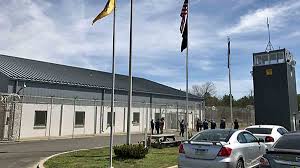
Recent prison refurbishment have prioritized rehabilitation, sustainability, and technology. Traditional prisons are being replaced by more innovative ones that emphasize rehabilitation and reintegration Steel Cell Word Class Security Solutions. Innovative correctional facility remodeling initiatives worldwide reflect this transition.
Recent renovation projects’ attention on mental and physical health is exceptional. More natural light, ventilation, and outdoor space are being added to facilities. Research shows that such environmental elements might improve convicts’ mental health, which is vital for rehabilitation.
Modern prison refurbishments incorporate technology. AI-driven surveillance and biometric scanning have improved security and reduced the need for invasive monitoring. This technology also includes inmate management systems that track rehabilitation progress and keep health records, making rehabilitation more individualized and effective.
Recent renovation initiatives have been driven by sustainability. Correctional facilities use renewable energy, green building principles, and trash reduction and recycling programs. These measures lower these facilities’ environmental impact and operational costs over time.
The emphasis on jail education and vocational training is another trend. Classrooms, workshops, and libraries with the resources to assist inmate education and skill development are being added to refurbished institutions. This strategy emphasizes that education and employment skills help convicts reintegrate into society and reduce recidivism.
The design of prison living quarters has also changed. Moving from overcrowded and degrading conditions to more spacious, well-lit, and better-ventilated living areas respects convicts’ dignity and rights. This makes convicts’ lives better and makes the facility more stable.
Involving inmates in refurbishment is a new technique with several benefits. Painting, landscaping, and other construction projects provide inmates a sense of ownership and practical skills.
Finally, prison refurbishment projects emphasize community integration. Prisons are becoming more linked with their communities by building community event spaces and integrating local companies and groups in educational and training initiatives. This integration reduces the stigma of jail and helps ex-offenders reintegrate into society.
In conclusion, the field of prison refurbishment is fast changing, focusing on rehabilitation, technology, sustainability, education, humane living circumstances, convict involvement, and community integration. These advances reflect a broader shift in incarceration ideology, acknowledging that prisons can and should help rehabilitate inmates and prepare them for reintegration.







